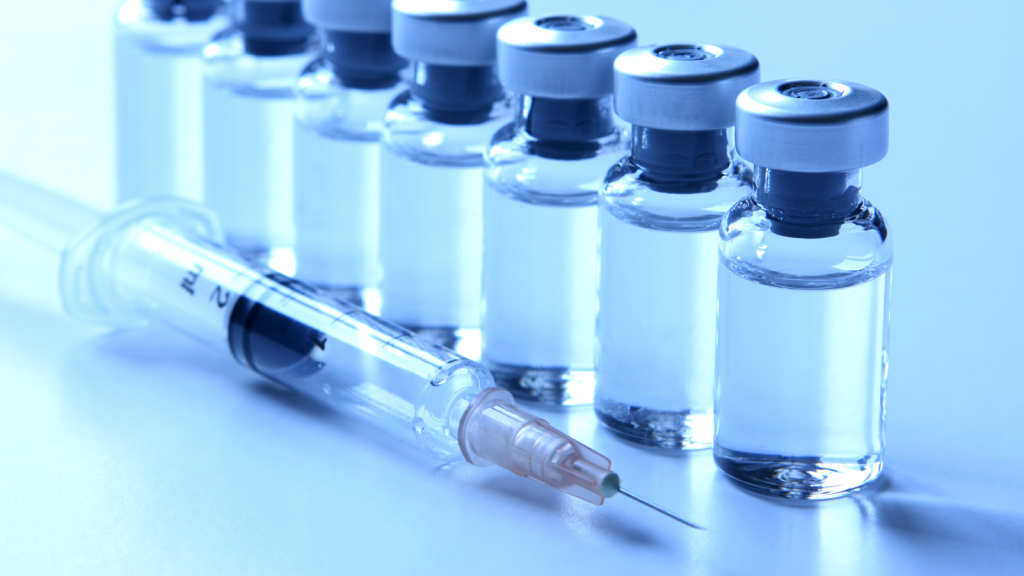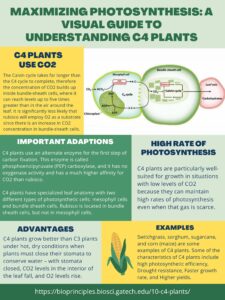December 31, 2019: The clock strikes midnight. Colorful confetti falls from the sky as millions of people across the world usher in a new decade with their loved ones, blissfully unaware that some of those same loved ones would eventually fall prey to a puzzling new virus causing an outbreak in Wuhan, China that very same night. As scientists and health officials racked their brains to decipher what was causing the outbreak, initially misdiagnosing it as pneumonia, the virus invaded other countries and continents. Upon deeper research of the virus, experts quickly realized that it was not pneumonia but rather a novel coronavirus that was wreaking havoc throughout the world.1 As new information emerged about the novel coronavirus, now termed COVID-19, such as its method of transmission through airborne particles and ability to severely attack the respiratory system, one thing became increasingly clear: the need for a vaccine in order to overcome and slow the spread of COVID-19.

Part of the reason why COVID-19 spread so quickly was because there was a lack of immunity when the virus first began to spread. Stopping its spread would require a significant percentage of individuals to become immune to the virus, a concept known as ‘herd immunity.’ This phrase refers to when a majority of the population is immune to the disease and consequently provides indirect protection to those susceptible to the disease.2 From a public health perspective, achieving herd immunity through the establishment of vaccines has proven useful in controlling diseases within a population. For example, measles, mumps, polio, and chickenpox are all examples of infectious diseases that were once very common but are now rare in the United States due to herd immunity and the development of their respective vaccines. Currently, because there is no vaccine, the only way to build herd immunity to COVID-19 in America is through natural infection. However, this method of reaching herd immunity comes with fatal consequences. Although the COVID-19 estimated infection to fatality ratio is 0.3-1.3%, the human lives lost at the cost of achieving herd immunity are more than just another number. Even if the United States were to reach an optimistic herd immunity threshold of 50% through natural infection, that would still mean up to 2,100,000 Americans could potentially die in the process.3 Adding to these fatalities is the fact that hospitals and medical staff are overwhelmed with the amount of COVID-19 patients they have been seeing since March. Some of the nation’s largest hospitals, especially in Texas, have struggled to improve patient management, a component that was already severely lacking. Consequently, the health of individuals who are high-risk for severe complications if they contract the virus has been jeopardized.4 Unfortunately, these are only a few factors amplifying the negative consequences of reaching herd immunity through natural infection, further emphasizing the importance of a COVID-19 vaccine in order to greatly improve the current state of public and community health in the United States.

A little over two months after President Trump declared the COVID-19 pandemic a national emergency in the United States, Moderna, a Massachusetts biotechnology company, was the first to announce promising early results from phase 1 of its vaccine trials on May 19, 2020. The vaccine, funded by the Trump Administration’s joint effort with the Department of Defense (DOD) and the Department of Health and Human Safety Services (DHHS), is part of Operation Warp Speed, an initiative with the goal to administer a COVID-19 vaccine to millions of people by the end of the year.5 Meanwhile, Americans continued to see their loved ones suffer throughout the summer as infection and mortality rates exponentially increased. In a one-month period from June 16 to July 16, new daily cases in the United States rose from 23,406 to 71,732, a 206% increase.6 Additionally, the physical and mental toll of the pandemic has withered down whatever hope people had left. According to data from the Kaiser Family Foundation, 34.5% of adults reported symptoms of anxiety or depressive disorder during the month of May. This percentage increased to 36.5% in June and 40.1% in July.7 Adding to this statistic is the fact that by mid-June, over 36 million Americans filed for unemployment claims, solidifying the need for a vaccine in order for the United States to fully open back up.8
But what’s the guarantee that a vaccine will reverse the adverse effects of coronavirus, especially when experts are expressing worry over a rushed vaccine?9 Unfortunately, while not even the nation’s top scientists can guarantee that a vaccine will provide 100% immunity to the virus, the process of developing, approving, and distributing a vaccine is extensive in order to ensure that it helps—and not harms—our communities. In a joint publication release, the U.S. Department of Health and Human Safety Services (DHHS) and the Department of Defense (DOD) partnered together and detailed a plan of distribution for when a COVID-19 vaccine becomes available. Adhering to the steps outlined by the Federal Drug Administration (FDA) for vaccine development and approval, the plan for distributing the vaccine has three components: partnerships with state, local, and tribal health departments; a centralized distributor contract; and a flexible, web-based vaccine tracking system for allocation, ordering, uptake, and management. In phase 1 of distribution, the DHHS and DOD plan to set up administration sites in partnership with specific state, local, and tribal health departments such as Indian Health Services, long-term care (LTC) facilities, and home health services. By establishing these partnerships, the DHHS and DOD hope to make the vaccine product available as many persons as possible. Then, in phase 2, centralized distribution will take place under a contract between the Centers for Disease Control (CDC) and McKesson, which distributed the H1N1 vaccine during the H1N1 pandemic in 2009-2010. Once the target areas are determined through phase 1, McKesson will deliver the vaccine to these areas and begin the centralized distribution process. Once phase 2 is complete, the DHHS’s Vaccine Tracking System (VTrckS) will be used to monitor the uptake, ordering, and management of the vaccine during phase 3.10 In addition to this detailed plan, descriptive public messaging that lets people know where to get the vaccine, as well as, when it will be available to them can help during distribution. This can be implemented through community organizing as well as social media campaigns raising awareness of the vaccine when it is released.

July 27, 2020: More than two months after their initial announcement of successful phase 1 vaccine development trials and six months after COVID-19 started to impact America, Moderna announced FDA approval of its phase 2 clinical results for the development of a COVID-19 vaccine. The biotechnology company enrolled at least 30,000 volunteers in its phase 3 clinical trials, and so far the vaccine has shown promising results. During the phase 1 clinical development trials all 45 volunteers who received the vaccine produced COVID-19 antibodies in response to the vaccine, and “no serious adverse events were reported” during phase 2 trials.11 For the most part, participants only reported fatigue, headache, chills, myalgia or pain at the injection site, and as of now Moderna plans to go forward with phase 3 of its vaccine creation and test it on large groups of individuals willing to participate in the trial.
There is one group in particular that is hesitant to trust this potential new vaccine. Historically, people of color—specifically Black people—distrust vaccinations due to incidents such as the Tuskegee Syphilis study. During 1932, Black men participated in a study for a Syphilis vaccine but were purposely not offered penicillin as a method of treatment due to prejudice against African Americans among the vaccine administrators.12 The trial, infamous for fueling African American distrust in the government and U.S. healthcare system, still has lasting effects today. In fact, results from a study conducted by the American Journal of Preventative Medicine published in 2015 found that “vaccination coverage was significantly lower among non-Hispanic Blacks, Hispanics, and non-Hispanic Asians compared with non-Hispanic whites.” Part of the reason for lower vaccination rates in Blacks specifically, compared to White adults, is Black adults express the highest level of worry regarding vaccines. To some extent, lower vaccination rates among adults of color reflect their higher uninsured rates according to data from the Center for Disease Control (CDC). Thus, once a COVID-19 vaccine is produced in mass scale, administering it and building trust with the Black community and other communities of color will be pertinent to eradicating the virus, especially in vulnerable areas. Luckily, biotechnology and pharmaceutical companies can slowly earn back the trust of Black people by including them in the COVID-19 vaccine trials and administering equal dosages of the vaccine regardless of race. Doing so will not only build trust with people of color, but will also be statistically beneficial when examining the effects of the vaccine across all groups.13
While there is no specific date for when the United States and other major countries may reach herd immunity for COVID-19, the development of the Moderna vaccine, as well as other vaccines, shows a promising start to reaching that point. While some health officials have voiced concerns about speeding up the vaccine development process, the idea that COVID-19 could eventually be eradicated provides hope for those affected both directly and indirectly by the virus. Nothing can replace the loved ones who died because of the pandemic, but knowing that we can keep other people’s loved ones, as well as our own, safe by having a vaccine helps bring a sense of hope in a year of despair.
- “Timeline of WHO’s response to COVID-19,” Newsroom Releases, World Health Organization, June 29, 2020, https://www.who.int/news-room/detail/29-06-2020-covidtimeline. ↵
- Gypsyamber D’Souza and David Dowdy, “What is Herd Immunity and How Can We Achieve it With COVID-19?” School of Public Health Expert Insights, Johns Hopkins Bloomberg School of Public Health, April 10, 2020, https://www.jhsph.edu/covid-19/articles/achieving-herd-immunity-with-covid19.html. ↵
- Samantha Artiga et al., “Racial Disparities in Flu Vaccination: Implications for COVID-19 Vaccination Efforts,” Kaiser Family Foundation, September 15, 2020, https://www.kff.org/policy-watch/racial-disparities-flu-vaccination-implications-covid-19-vaccination-efforts/. ↵
- Samantha Artiga et al., “Racial Disparities in Flu Vaccination: Implications for COVID-19 Vaccination Efforts,” Kaiser Family Foundation, September 15, 2020, https://www.kff.org/policy-watch/racial-disparities-flu-vaccination-implications-covid-19-vaccination-efforts/. ↵
- “From the Factory to the Frontlines: The Operation Warp Speed strategy for Distributing a COVID-19 Vaccine.” Newsroom Releases, U.S. Department of Health and Human Services & U.S. Department of Defense, September 16, 2020, PDF File, https://www.hhs.gov/about/news/2020/09/16/trump-administration-releases-covid-19-vaccine-distribution-strategy.html. ↵
- “Coronavirus US Cases, Deaths,” The Washington Post, March 1, 2020, Last Updated October 22, 2020, https://www.washingtonpost.com/graphics/2020/national/coronavirus-us-cases-deaths/. ↵
- Nirmita Panchal et al., “The Implications of COVID-19 for Mental Health and Substance Use,” Kaiser Family Foundation (KFF), August 21, 2020, https://www.kff.org/coronavirus-covid-19/issue-brief/the-implications-of-covid-19-for-mental-health-and-substance-use/. ↵
- Patricia Cohen and Tiffany Hsu,”‘Rolling Shock’ as Job Losses Mount Even With Reopenings,” The New York Times, June 11, 2020, https://www.nytimes.com/2020/05/14/business/economy/coronavirus-unemployment-claims.html. ↵
- Jen Christensen, “Past Vaccine Disasters Show Why Rushing a Coronavirus Vaccine Now Could be ‘Colossally Stupid,'” CNN, September 1, 2020, https://www.cnn.com/2020/09/01/health/eua-coronavirus-vaccine-history/index.html. ↵
- “From the Factory to the Frontlines: The Operation Warp Speed strategy for Distributing a COVID-19 Vaccine.” Newsroom Releases, U.S. Department of Health and Human Services & U.S. Department of Defense, September 16, 2020, PDF File, Page 8, https://www.hhs.gov/about/news/2020/09/16/trump-administration-releases-covid-19-vaccine-distribution-strategy.html. ↵
- “Experimental COVID-19 vaccine safe, generates immune response,” Newsroom Releases, National Institute of Health, July 14, 2020, https://www.nih.gov/news-events/news-releases/experimental-covid-19-vaccine-safe-generates-immune-response. ↵
- Elizabeth Nix, “Tuskegee Experiment: The Infamous Syphilis Study,” HISTORY, May 16, 2017, updated July 29, 2019, https://www.history.com/news/the-infamous-40-year-tuskegee-study. ↵
- Samantha Artiga et al., “Racial Disparities in Flu Vaccination: Implications for COVID-19 Vaccination Efforts,” Kaiser Family Foundation, September 15, 2020, https://www.kff.org/policy-watch/racial-disparities-flu-vaccination-implications-covid-19-vaccination-efforts/. ↵




36 comments
Adam Alviar
I’m really glad I came across this article as it was able to shine a new light onto my perspective of the “cure”, or vaccine for COVID-19. She brings up a good point when she compares to how we think that once the vaccine is available everything will just reverse itself and be fine. When in reality the fact remains that were going to have a lot of repercussions. We’ve already done the damage to the stock market, work force, and just on how we live our everyday normal lives, and we’ll have to fix it all back up once we finally get through COVID-19.
Kathe Lehman-Meyer
Great job explaining the value of a vaccine and the process the U.S. has taken to develop and implement. I also find that your background about Covid-19 to be easy to understand, factual and well written. I’m hopeful that the vaccine will be effective.
K. V. Siva Prasad
Very good and timely article.
Ashley Perez
Ratna, your article shed light on aspects of the COVID-19 pandemic that are often overlooked. You described the importance of herd immunity and the role that the government plays in maintaining it very well. It was also very impressive to see how you provided insight on how systemic racism plays more of a role in public health than many would expect.
Manuel Rodriguez
Ratna, this a very informative article and it was very well put together. While the virus itself is unlike anything we have ever seen in our lifetime, it’s important for us to learn about the next steps in the recovery process. Yes, the virus caught the entire country off-guard and highlighted some of the deepest inequalities in society, but learning about the vaccine that will fight it off becomes just as important as well. Thank you for turning our attention to this area of discussion during the crisis.
Victor Rodriguez
This article is very informative and provides valuable information to a topic that is trending right now. How many more people are going to continue to get affected by COVID-19 until we finally have a vaccine? That is the question. I believe that private companies and scientist will continue working together in order to come with the best possible solution to this health crisis. Recently, there have many major vaccine results that are emerging optimistic mentality into our society. Research has shown that the vaccine has become almost 95% effective and that is bringing a lot of hope to many. Nevertheless, there are many people that do not trust the process and believe that the vaccine might be harmful. Only time will be able to tell.
Leslie Godinez Parra
Hi Ratna!
Great article, I really enjoyed reading this entire article. I think you did a great job of capturing most of our thoughts and sort of the emotions we’re all experiencing throughout the course of the pandemic. I really enjoyed how you incorporated some glimmer of hope during these times of despair as you phrased it. Finally, while I do agree that we need to reach some sort of vaccine soon, rushing this process could potentially result in negative consequences so it is important to take note of both the pros and cons.
Anapatricia Macias
This article was very informational and may help bring many people some relief or hope. As you stated, increased rates of depression or anxiety prove that the pandemic has done an incredible amount of damage in one way or another, and despite this, we should not want the process of developing the vaccine to be rushed. This could cause harm down the road, since the long-term effects would be unknown. You did a great job explaining the different phases of Moderna’s clinical trial, and you also explained very well why people of color, specifically Black people, may have trouble trusting the process or having it administered. Awesome job!
Fernando Zubia
Great article to read in times of chaos. Everyone is eager to find out when a vaccine might become available and if so, will it prove safe for humans. Questions continue to arise as the solution for the pandemic continues to be a world wide issue. This article gives people hope and the information needed to understand the process of getting a vaccine ready for distribution.
Andrew Gallegos
I love how the author wrote about this topic. I like how the author talks about the vaccine and how they are coming up with it. I do agree with rushing something that can cause such an outbreak can be a disaster. It takes time on this especially how serious this disease is.